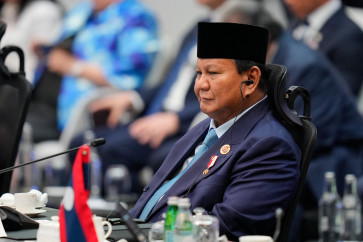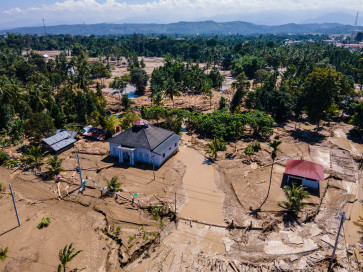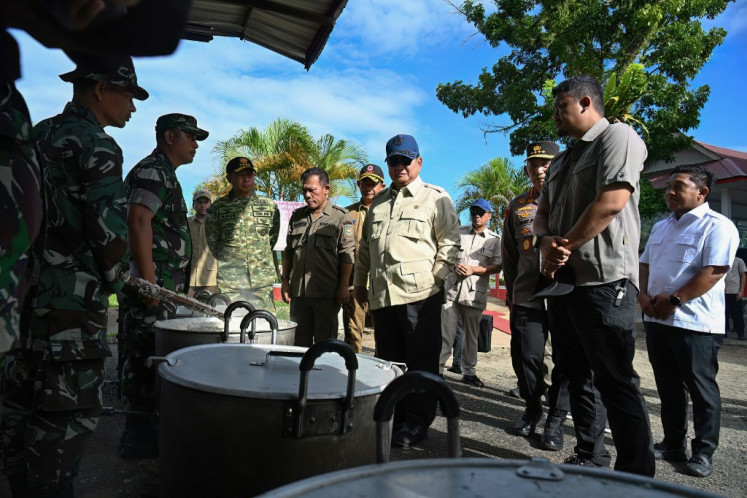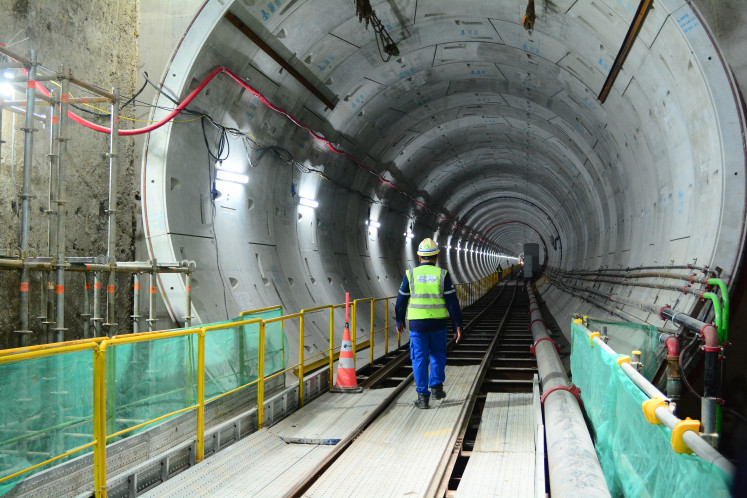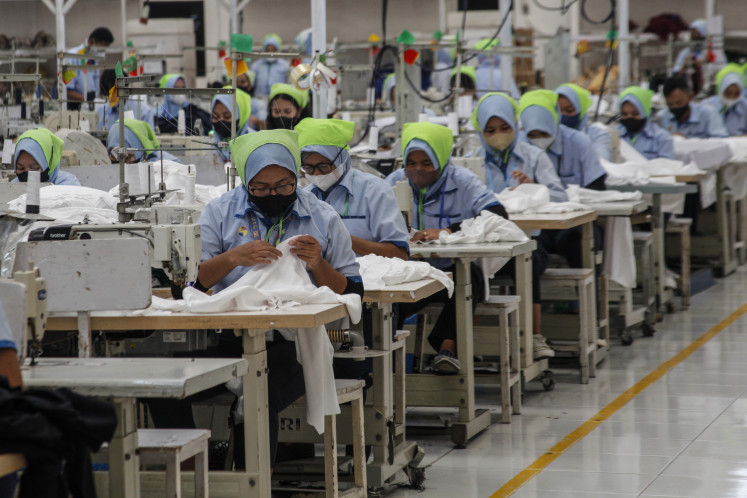Popular Reads
Top Results
Can't find what you're looking for?
View all search resultsPopular Reads
Top Results
Can't find what you're looking for?
View all search resultsDouble track for Trans-Java line to be operational in March
The Trans-Java double-track railway connecting the capital city to Surabaya in East Java is scheduled to begin operations in March after months of delay, a minister says
Change text size
Gift Premium Articles
to Anyone
T
he Trans-Java double-track railway connecting the capital city to Surabaya in East Java is scheduled to begin operations in March after months of delay, a minister says.
'We are currently conducting the finishing process of the construction. We will officially open the double track in March this year,' Transportation Minister EE Mangindaan told reporters on Thursday, pointing out that the construction would be 100 percent complete in February.
Ministry data shows that of the 436-kilometer Cirebon (West Java)-Surabaya section of the Trans-Java double track, 216 kilometers of tracks began operating between 2012 and 2013.
The Rp 9.8 trillion (US$838 million) double track, which was previously scheduled to begin operating in November last year, is expected to increase the existing railway capacity from 64 to 200 trains per day as well as reduce congestion and wear on the roads.
Railway container traffic is also estimated to rise from 200,000 twenty-foot equivalent units (TEUs) to 1 million TEUs a year once the double-track system is fully operational.
The double-track system, which will span 727 kilometers from Jakarta to Surabaya, is also expected to cut the travel time between the two cities, from the current 13 hours by express train to only eight-and-a-half hours.
Traveling times were lengthy because the railway connecting Cirebon and Surabaya was a single-track line, Mangindaan said.
'If two trains crossed paths, one train would have to wait at the nearest train station. In this case, an express train or special train with VVIP passengers, for example, the President or Vice President, would be prioritized. With the new double track, traveling times will be shortened,' he said.
The completion of the double-track project has been delayed for years mainly because of land-acquisition issues, according to the minister. 'Some citizens were still reluctant to relocate because they hadn't received sufficient compensation,' Mangindaan said.
Separately, the ministry's secretary to the directorate general of railways, Nugroho Indrio, said the remaining problem in the project that needed to be overcome was that some sections, including Tawang Station in Semarang (Central Java), were flood-prone.
'Several sections of the track at the station have been elevated, and yet, the potential for tidal flooding remains high,' he said.
'In the future, we will build an elevated railway system in Semarang.'
The project is part of the government's Master Plan for the Acceleration and Expansion of Indonesian Economic Development (MP3EI).
Another major project under the auspices of the MP3EI is the 33-km track linking Manggarai in South Jakarta to the main gateway, Soekarno-Hatta International Airport in Tangerang, Banten, west of Jakarta.
According to the ministry's data, Indonesia needs Rp 320 trillion in investment, starting from 2011 through to 2025, to develop railway services on the nation's five main islands: Sumatra, Java, Kalimantan, Sulawesi and Papua.



